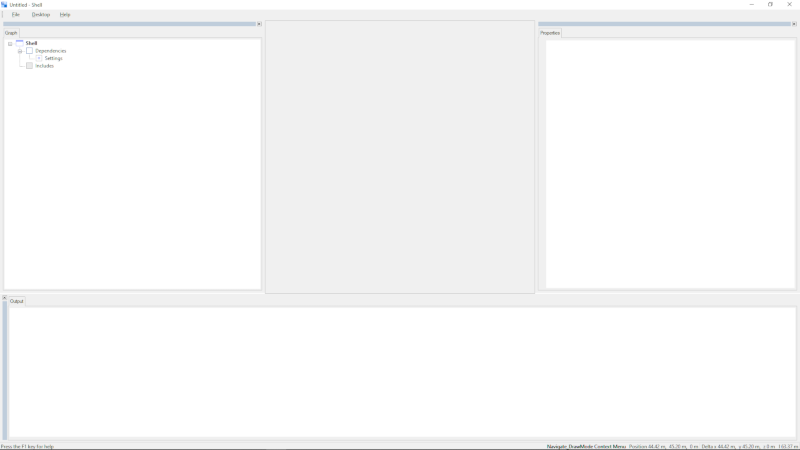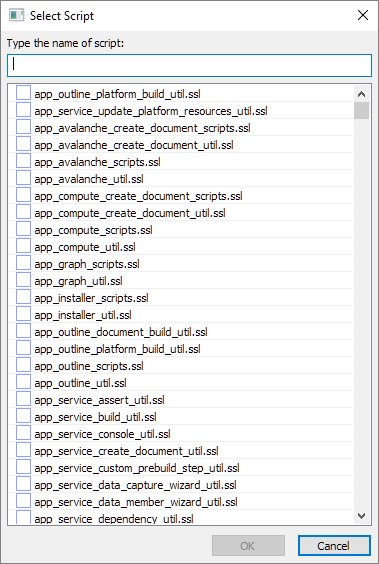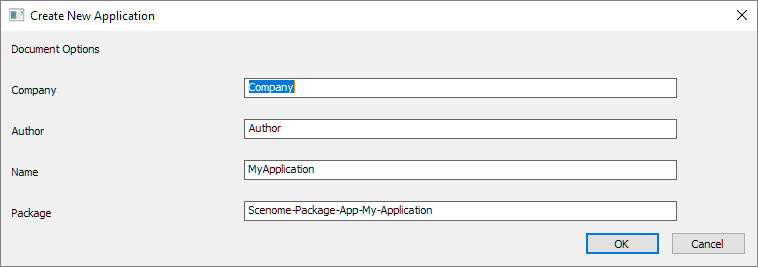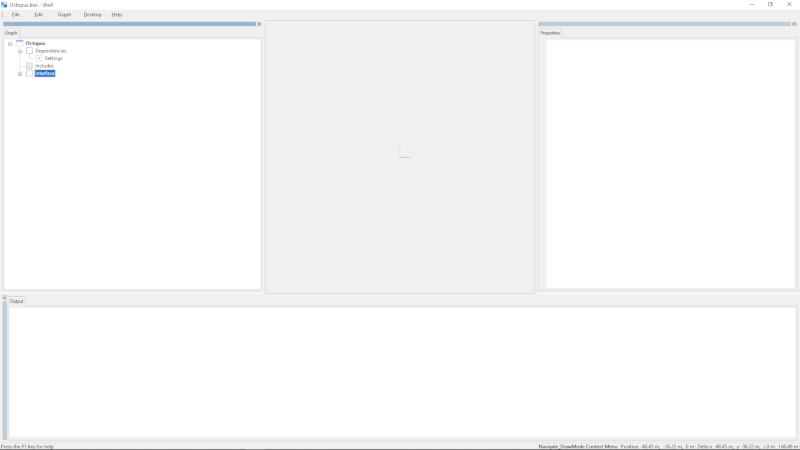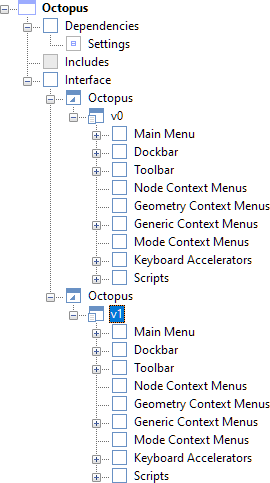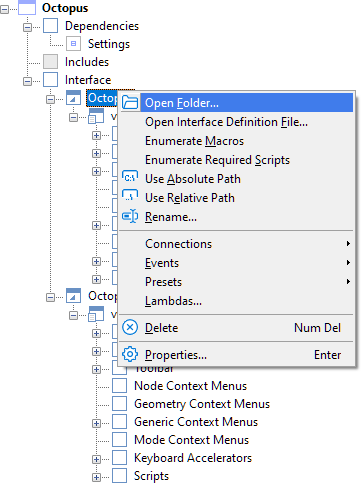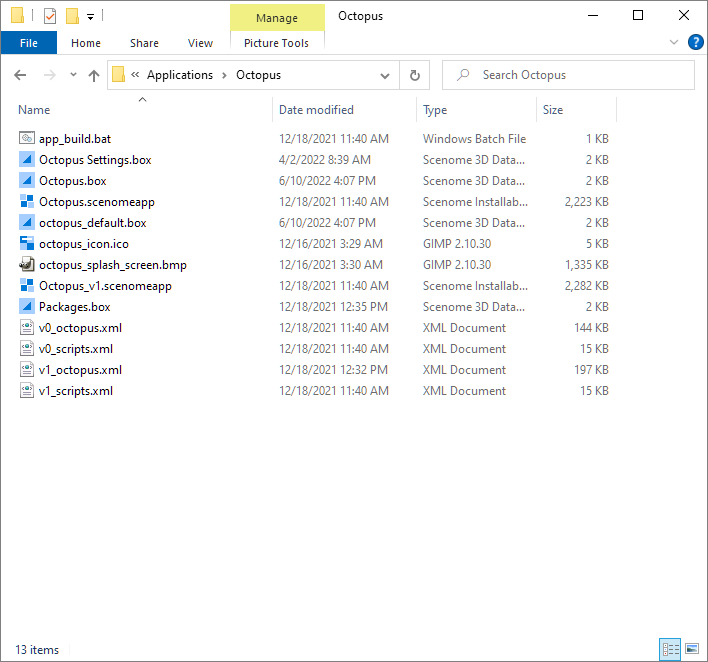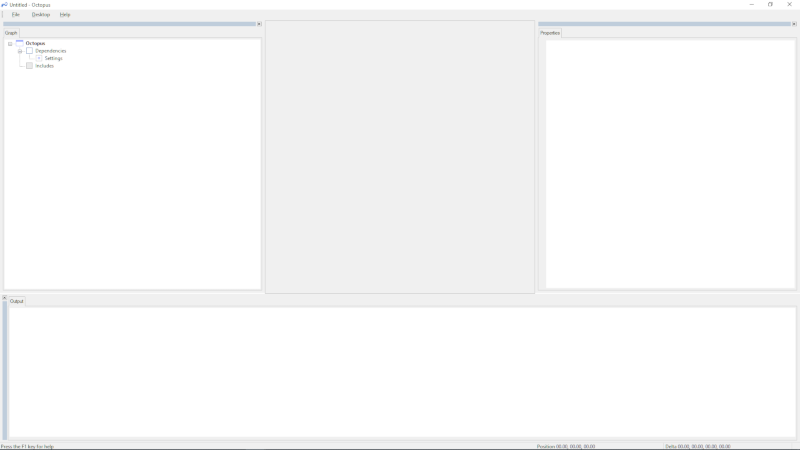| app_build.bat |
This contains a batch file for external-app-package.exe, which is a stand-alone executable that
packages a variety of resources such as a splash screen, application icons, and application shell layout files
into a file such as Octopus.simdifyapp. You can open this file with a text editor, but you don't have to edit
it yourself. |
| Packages.box |
Stores a basic list of packages associated with an application. This allows code to know what packages
are installed. You can open this file with the Outline app. |
| Octopus.box |
Contains the Octopus app shell layout, which contains all the interface elements used by the Octopus
application. This document is used to build the resources, such as .XML files, that describe the application's
user interface. Once resources are built, the resources are packaged into a complete application such as
Octopus.simdifyapp by the external-app-package.exe utility. You can open this file with the Shell app. |
| Octopus.simdifyapp |
Contains an application definition, which includes splash screen, application icons, user interface
layout descriptions, and keyboard accelerator bindings. All .simdifyapp files are generated by
external-app-package.exe. This is the application that is started when you start the
Octopus app from the start menu. You can open this file with with a text editor,
but you don't have to edit or manage it yourself. |
| octopus_default.box |
This contains the default document that the user sees when they start the Octopus app. It's important
that this document contains as little content as possible. It definitely should not contain any content
that requires file path resolution because all default documents are unsaved when you start a Simdify
application, and there is no way to resovle any relative file paths. |
| octopus.ico |
Contains the Octopus app icons used to represent the Octopus app in the Windows® user interface.
There are two icons contained in this file: a 32×32 pixel version and 16×16 pixel version. These icons appear when you use ALT+TAB
to switch between applications, and in the upper left corner of the application window. These icons are not
used to show which files .BOX are used by the Octopus application. All .BOX files used the standard Simdify
.BOX icon, and all .BOX files can be opened in any Simdify application. You can edit these files in programs
such as Microsoft® Visual Studio or GIMP®. Please note that these files must be saved as 24-bit. |
| octopus_splash.bmp |
Contains the Octopus app splash screen. This is the graphic that appears when the Octopus app starts.
You can edit this in program such as Adobe® PhotoShop or GIMP®. Please note that this file must
be saved as 24-bit Windows® .BMP file with no alpha channel. |
| Octopus_v1.simdifyapp |
Contains an application definition, which includes splash screen, application icons, user interface
layout descriptions, and keyboard accelerator bindings. All .simdifyapp files are generated by
external-app-package.exe. This is the application that is started when you double click a .BOX
file that specifies the v1 shell in the document root node properties. In addition, when you have Octopus.simdifyapp
running, and you open a file, the application switches to use this shell. You can open this file with with a text editor,
but you don't have to edit or manage it yourself. |
| v0_scripts.xml |
The Octopus app has two shells, referred to as v0_octopus and v1_octopus. The v0_octopus shell is stored in
Octopus.simdifyapp, and the v1_shell is stored in Octopus_v1.simdifyapp. This is the list of Simdify Scripting Language
script files that must be loaded and compiled when Octopus.simdifyapp starts.
You can open this file with with a text editor, but you don't have to edit or manage it yourself. |
| v0_octopus.xml |
This contains the interface layout used by Octopus.simdifyapp. It contains an XML description of the user
interface, including all menus, context menus, toolbars, dockbars, and keyboard accelerators.
You can open this file with with a text editor, but you don't have to edit or manage it yourself. |
| v1_scripts.xml |
The Octopus app has two shells, referred to as v0_octopus and v1_octopus. The v0_octopus shell is stored in
Octopus.simdifyapp, and the v1_shell is stored in Octopus_v1.simdifyapp. This is the list of Simdify Scripting Language
script files that must be loaded and compiled when Octopus_v1.simdifyapp starts.
You can open this file with with a text editor, but you don't have to edit or manage it yourself. |
| v1_octopus.xml |
This contains the interface layout used by Octopus_v1.simdifyapp. It contains an XML description of the user
interface, including all menus, context menus, toolbars, dockbars, and keyboard accelerators.
You can open this file with with a text editor, but you don't have to edit or manage it yourself. |
| app_octopus_create_document_scripts.ssl |
This is a script macro library that contains a Simdify command macro that will run when the user
creates a new document. |
| app_octopus_create_document_util.ssl |
This is a script function library that contains functions that are used by Simdify command
macros in app_octopus_create_document_scripts.ssl. |
| app_octopus_scripts.ssl |
This is a script macro library that contains a Simdify command macro that builds an Octopus app
file when the user selects Graph > Build All from the main menu in the Octopus app.
This will also contain other Simdify command macros used only by the Octopus application. |
| app_octopus_util.ssl |
This is a script function library that contains functions that are used by the Simdify command
macros in app_octopus_scripts.ssl. |
